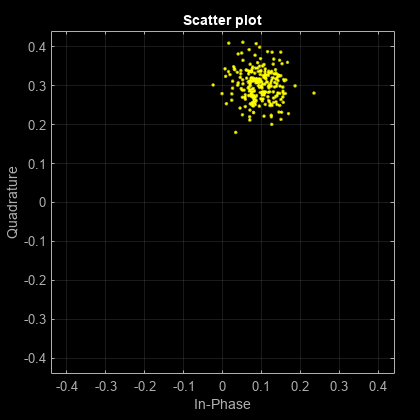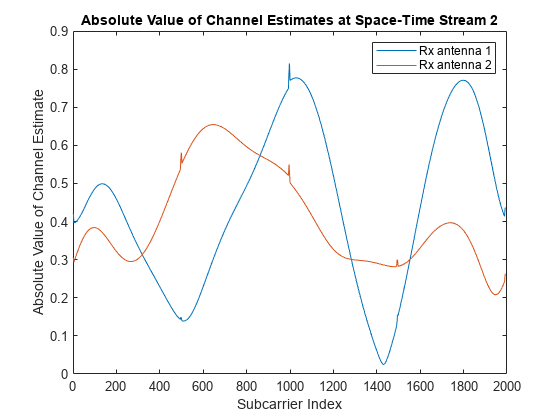wlanHELTFChannelEstimate
Syntax
Description
chEst = wlanHELTFChannelEstimate(demodSig,cfg,ruNumber)cfg as a wlanHEMUConfig
object.
[
returns the channel estimate at each pilot subcarrier location for each demodulated HE-LTF
OFDM symbol in addition to any input argument combination from the previous syntaxes.chEst,chEstPilots] = wlanHELTFChannelEstimate(___)
[
specifies frequency smoothing using a name-value pair argument. chEst,chEstPilots] = wlanHELTFChannelEstimate(___,FrequencySmoothingSpan=span)
Examples
Input Arguments
Output Arguments
More About
References
[1] IEEE Std 802.11-2020 (Revision of IEEE Std 802.11-2016). “Part 11: Wireless LAN Medium Access Control (MAC) and Physical Layer (PHY) Specifications.” IEEE Standard for Information Technology — Telecommunications and Information Exchange between Systems — Local and Metropolitan Area Networks — Specific Requirements.
[2] IEEE Std 802.11ax-2021 (Amendment to IEEE Std 802.11-2020). “Part 11: Wireless LAN Medium Access Control (MAC) and Physical Layer (PHY) Specifications. Amendment 1: Enhancements for High Efficiency WLAN.” IEEE Standard for Information Technology — Telecommunications and Information Exchange between Systems. Local and Metropolitan Area Networks — Specific Requirements.

